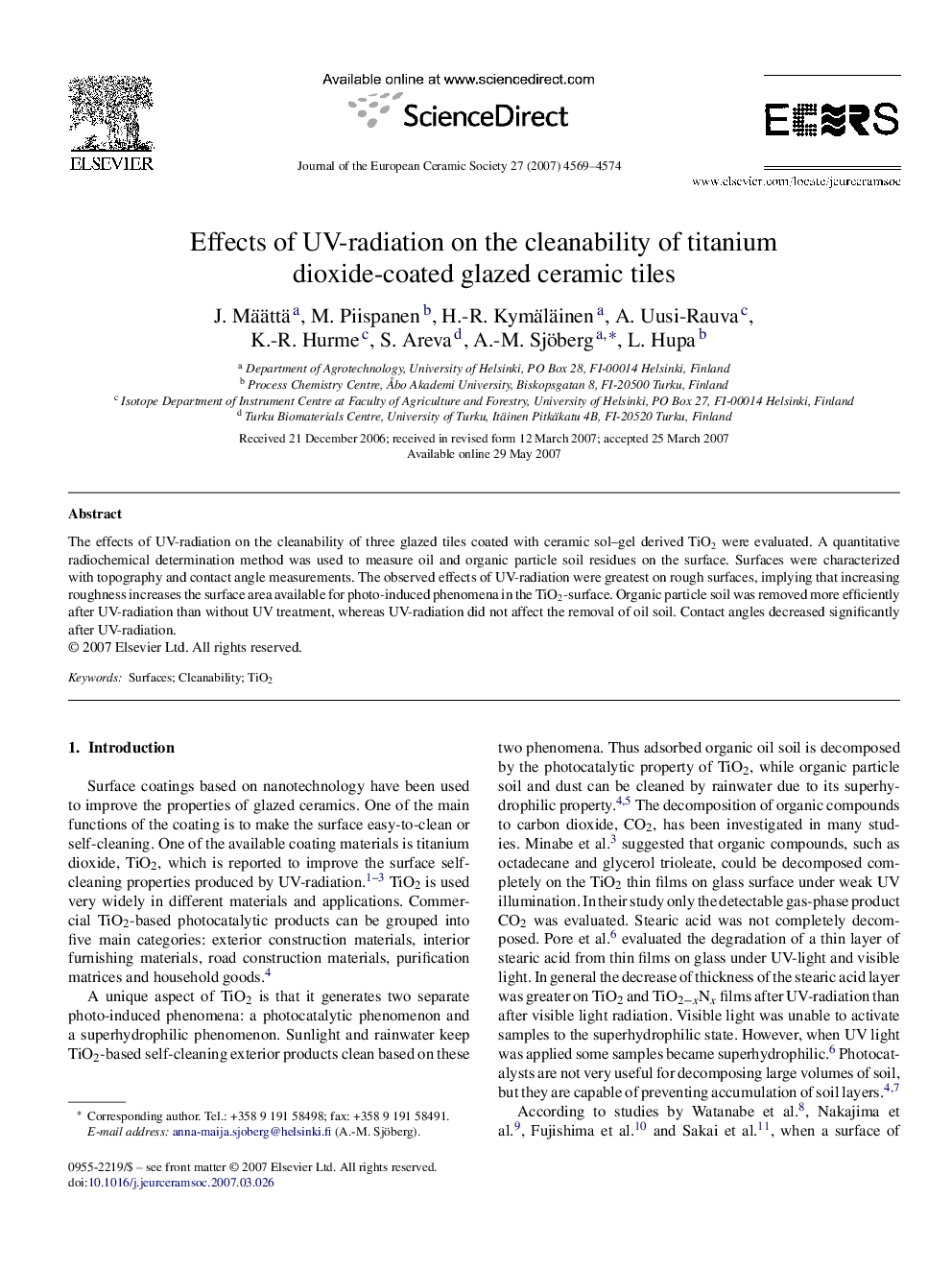| Article ID | Journal | Published Year | Pages | File Type |
|---|---|---|---|---|
| 1478116 | Journal of the European Ceramic Society | 2007 | 6 Pages |
Abstract
The effects of UV-radiation on the cleanability of three glazed tiles coated with ceramic sol–gel derived TiO2 were evaluated. A quantitative radiochemical determination method was used to measure oil and organic particle soil residues on the surface. Surfaces were characterized with topography and contact angle measurements. The observed effects of UV-radiation were greatest on rough surfaces, implying that increasing roughness increases the surface area available for photo-induced phenomena in the TiO2-surface. Organic particle soil was removed more efficiently after UV-radiation than without UV treatment, whereas UV-radiation did not affect the removal of oil soil. Contact angles decreased significantly after UV-radiation.
Keywords
Related Topics
Physical Sciences and Engineering
Materials Science
Ceramics and Composites
Authors
J. Määttä, M. Piispanen, H.-R. Kymäläinen, A. Uusi-Rauva, K.-R. Hurme, S. Areva, A.-M. Sjöberg, L. Hupa,
